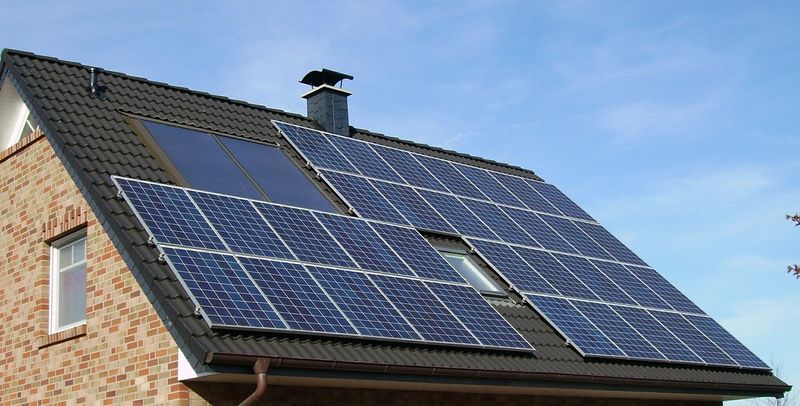California Invites Inefficiency, Cronyism with Solar Mandate

California wants every home to come with a solar panel. In an unprecedented move, it is now the first US state to require solar panels on the majority of houses built after January 2020.
This is a dream come true for supporters of alternative energy, who believe natural-gas consumption is unsustainable and brings great harm to the environment.
However, there is much to lament in California’s decision to go solar. When placed under the microscope, solar energy has a spotty track record from an efficiency standpoint, and it facilitates cronyism.
A Warning from Across the Pond
Solar-energy enthusiasts, especially former President Barack Obama, point to European countries for examples of alternatives to conventional nonrenewable sources.
Like the appeals to European welfare-state policies, calls for state-sponsored solar projects look great on paper, but in practice they turn out to be crony boondoggles. Spain, a posterchild for renewable energies, has spearheaded government-sponsored, clean-energy projects since the 1990s. In the 2000s, the central government doubled down and pushed for more aggressive renewable mandates, quotas, and subsidies.
Despite what they believed to be valiant efforts, the results were economically destructive. As documented in the Institute for Energy Research paper, Spain’s Green Experiment: A Cautionary Tale, electricity prices rose much faster than in the United States from 2005 to 2011. In this time period, Spain’s electricity prices rose by 92 percent, whereas the United States’ only rose by 24 percent.
Although marketed as ozone friendly, this ambitious plan ironically increased carbon dioxide emissions by 34.5 percent from 1994 to 2011. In addition, Gabriel Calzada Álvarez, an economics professor at King Juan Carlos University at the time, highlighted how every green job created destroyed approximately 2.2 jobs. Cooler heads eventually prevailed in Spain, and they scaled back subsidies for renewable-energy ventures after realizing how costly it would be to maintain them.
Despite Spain’s failed experiment with renewable energy, solar enthusiasts in the United States insist on imposing similar policies.
Solar-Powered Inefficiencies in the United States
California is the leading US state in the promotion of renewable-energy programs. However, just like the European experiments, the results have been far from promising.
Although renewable-energy proponents boast about California’s high rate of per-capita solar jobs, these figures actually demonstrate the sector’s inherent inefficiency. Mark Perry of the American Enterprise Institute brings solar zealots down to Earth with several eye-opening statistics:
- 374,000 workers are employed in the US solar sector, yet only account for 0.9 percent of total electricity generated in the United States.
- On the other hand, natural gas employs about 398,000 people, which produces slightly more than one third of US electric power, or 37 times more electricity than solar’s minuscule share.
But this is only the tip of the iceberg. The same study depicts the stark gap between solar power versus coal and natural gas when it comes to electricity production. In 2016, the coal sector produced 7,745 megawatt-hours per worker, while the natural gas sector generated 3,812 MWh per worker.
However, solar power does not even come close, producing a measly 98 MWh per worker. In sum, it takes 79 solar workers to get the same amount of electricity that just one coal worker is able to produce.
The case for solar power does not look so good after all, especially when it has to operate on the taxpayer’s dime.
Californianomics
It’s no secret that California features some of the most expensive housing markets in the nation. This new solar-panel mandate will only make matters worse. According to the state’s own projections, mandatory solar panels are estimated to add $8,000-12,000 to the price of a home.
We have seen how inefficient the solar industry is when compared to its natural gas and coal counterparts. But the Californian government doesn’t care, as it plans to double down on the interventionism with mandates. This represents a clear case of cronyism, where the state picks winners and losers, instead of letting consumers decide for themselves.
Solar-energy companies come out as the obvious winners under this new law. But like any interventionist project, there is always a forgotten man in the equation. Another costly regulation will only make the already expensive housing market further out of reach for California’s poorest.
Californians simply deserve better. Instead of relying on the state to dictate top-down energy policies, it should follow in the footsteps of Texas and use more market incentives to achieve cleaner, cheaper solutions. It’s time for California to back off propping up the solar industry and instead let entrepreneurs and consumers develop the energy sector.
